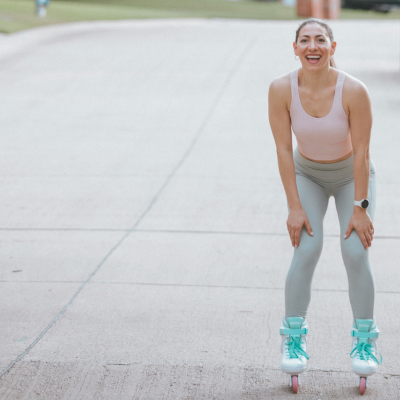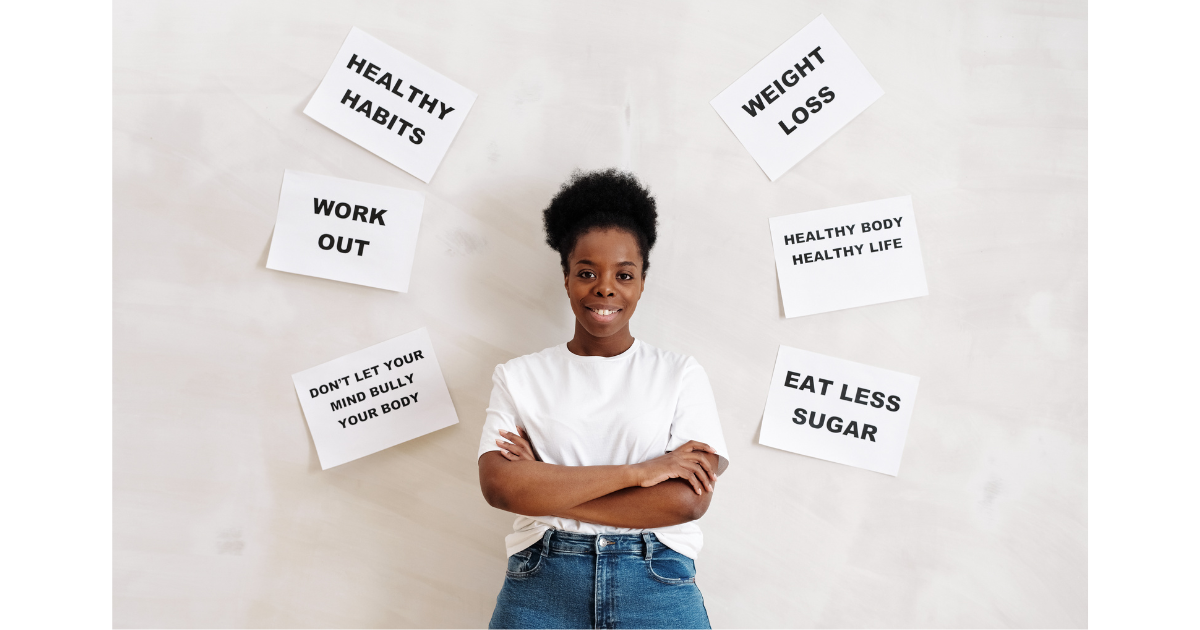If you’ve been relying on cardio to lose weight since your 20s and now you’re in your 30s, I have some news for you. First off, it’s not your fault. We were taught that more cardio equals more fat loss—that more sweat means more calories burned. But what if I told you that this approach might be the very reason you’re struggling to reach your goals and that it could actually be working against your body’s needs?

Cardio does have amazing health benefits, but it should never be your primary tool for weight loss. Instead, it can be used to improve results, endurance, and performance, which will help you feel better on a daily basis. The key is knowing how to apply cardio in a smart and strategic way. That’s what this post is all about.
As a cardio lover myself, I want to show you how to enjoy it in a way that aligns with your body and health goals, so it doesn’t get in the way of your dream results.
The common Misconception About Cardio and How it Leads to ‘Chronic Cardio’
The idea that “if I just do more cardio, the fat will melt away” probably sounds familiar. If you grew up watching aerobics videos or seeing family members glued to Jane Fonda workouts, you know the drill: the higher your heart rate and the longer it stays there, the better.
But using cardio with this mindset can push your body into a sugar-burning mode and lead to energy crashes. Here’s a quick breakdown: our bodies can burn fat or carbs (sugar) for fuel. To tap into fat-burning, your sugar levels need to be low. That’s when your body can switch gears into fat-burning mode.
Once you understand how to use cardio effectively, you can guide your body toward fat-burning by monitoring your heart rate and avoiding a ‘chronic cardio’ state.
When you perform high-intensity cardio for long periods, your body burns primarily glucose (sugar), making it harder to switch to fat-burning mode—especially if your metabolism isn’t in top shape. Plus, excessive cardio tends to make you hungrier, leading to overeating because you think you’ve earned more calories. The issue is that this often results in reaching for more simple carbs and sugary foods (think cookies, bread, pasta), which lack nutrients and leave you feeling unsatisfied. This kicks off a cycle of rapid sugar spikes and crashes, leaving you tired, craving more, and caught in a loop.
This yo-yo effect is exhausting and unsustainable. Relying on cardio alone—or doing it wrong—can lead to plateaus, fatigue, and even metabolic slowdown.
Why Cardio Isn’t the Best for Fat Loss
When you focus on cardio for weight loss, you’re missing out on key factors needed for lasting fat loss:
Plateaus: Your body adapts quickly. Over time, the same cardio routine stops working, leaving you frustrated when the scale doesn’t change (Side note: the scale is a terrible way to track progress!)
Muscle Loss: Excess cardio can cause muscle breakdown, lowering your metabolism and making you feel tired faster. Your body becomes less efficient at turning food into energy.
Stress Response: Overdoing cardio spikes stress hormones (as if daily stress isn’t high enough already), making it even harder to lose fat—especially for women in their 30s. Your body stays in survival mode and holds on to fat (particularly around your belly.)
The Right Way to Use Cardio
I love cardio and still do it regularly, but I learned the hard way how to do it right. Let me help you avoid the same mistakes.
When done correctly, cardio can be a powerful tool for boosting endurance, heart health, and overall fitness. The key is not overloading your body or sabotaging your metabolism (how efficiently your body creates energy).
Three Main Things to Keep in Mind:
- Prioritize Strength Training: Building and maintaining muscle is key for fat loss. Aim for at least three strength sessions a week to restore and boost your metabolism. Muscle plays a critical role in that.
- Prioritize Zone 2 Cardio: Keep your heart rate at 60-70% of your max heart rate. A simple way to find this fat-burning zone is to subtract your age from 180. The result is your maximum aerobic function, or the upper limit for your heart rate during extended cardio. Staying in this range keeps you in fat-burning mode and avoids the downsides of high-intensity, long-duration training.
- Keep It Balanced: Use cardio to complement your routine, not as the main event. Short bursts of higher-intensity cardio (like HIIT) can be helpful in small doses but don’t let them take over. Overdoing it can lead to ‘chronic cardio.’ (Watch the YouTube video linked above to learn more.)
A Smarter Approach for Women in Their 30s
As we enter our 30s, our bodies and hormones change, but life’s doesn’t slow down. While our metabolism doesn’t naturally decline, it does if we don’t support it. That’s why it’s essential to shift from quick fixes to sustainable practices that work with your body, not against it.
Balancing cardio with strength training, proper nutrition, and recovery will lead to lasting results, more energy, and a body that feels stronger—not just smaller (weaker.)

Ready to Shift Your Mindset?
If you’re tired of the endless cycle of cardio, sugar cravings, and losing weight only to regain it, it’s time to rethink your strategy. Focus on what truly drives change: building muscle, nourishing your body, and using cardio smartly. These are not quick fixes, but helping you find a way to fit them into your life is my specialty. I can help you develop lasting habits that will transform your life and deliver results you’ve been dreaming of.
For more support, check out my FREE 3-Day Video Program, designed to help you get started on a healthier, more sustainable path.
References:
https://pubmed.ncbi.nlm.nih.gov/25766050
https://pubmed.ncbi.nlm.nih.gov/25082954
https://www.ncbi.nlm.nih.gov/pmc/articles/PMC3544497



